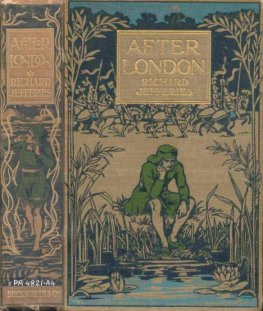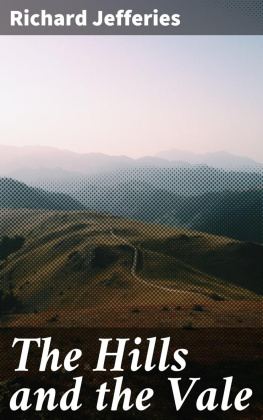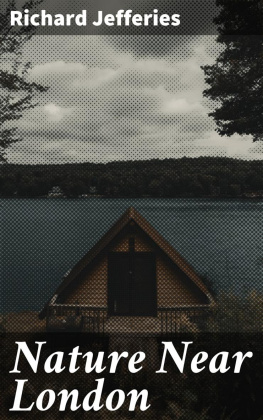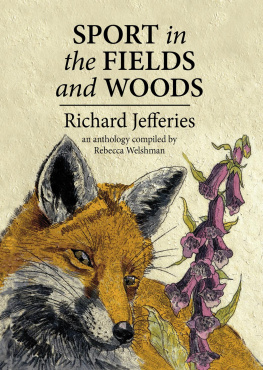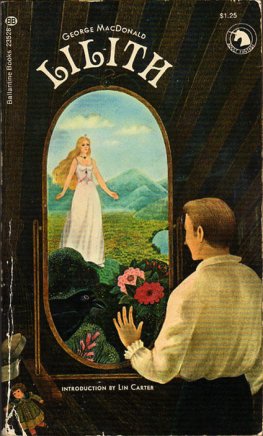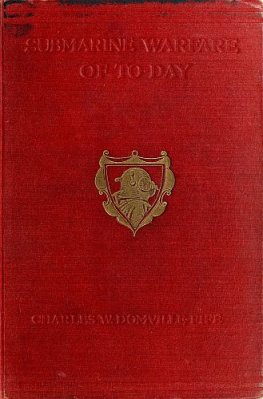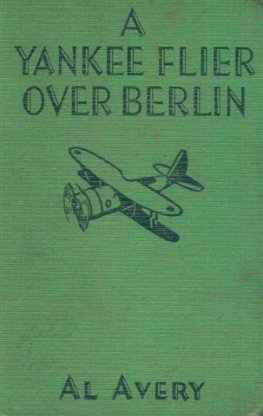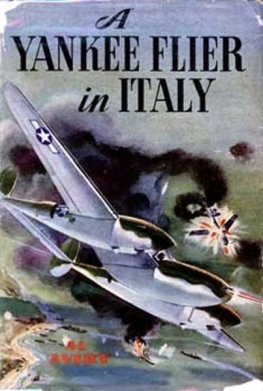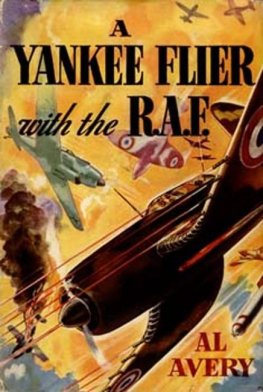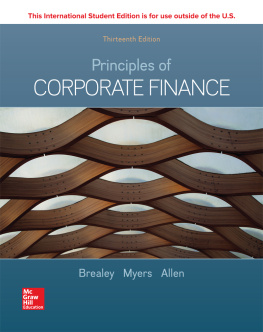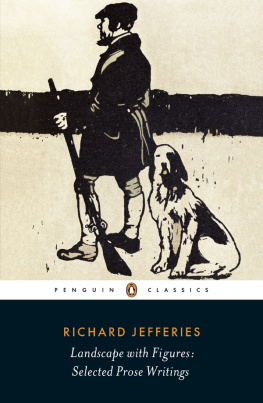Richard Jefferies - After London
Here you can read online Richard Jefferies - After London full text of the book (entire story) in english for free. Download pdf and epub, get meaning, cover and reviews about this ebook. City: London, year: 1905, publisher: Duckworth & Co., genre: Science fiction. Description of the work, (preface) as well as reviews are available. Best literature library LitArk.com created for fans of good reading and offers a wide selection of genres:
Romance novel
Science fiction
Adventure
Detective
Science
History
Home and family
Prose
Art
Politics
Computer
Non-fiction
Religion
Business
Children
Humor
Choose a favorite category and find really read worthwhile books. Enjoy immersion in the world of imagination, feel the emotions of the characters or learn something new for yourself, make an fascinating discovery.
- Book:After London
- Author:
- Publisher:Duckworth & Co.
- Genre:
- Year:1905
- City:London
- Rating:5 / 5
- Favourites:Add to favourites
- Your mark:
- 100
- 1
- 2
- 3
- 4
- 5
After London: summary, description and annotation
We offer to read an annotation, description, summary or preface (depends on what the author of the book "After London" wrote himself). If you haven't found the necessary information about the book — write in the comments, we will try to find it.
After London — read online for free the complete book (whole text) full work
Below is the text of the book, divided by pages. System saving the place of the last page read, allows you to conveniently read the book "After London" online for free, without having to search again every time where you left off. Put a bookmark, and you can go to the page where you finished reading at any time.
Font size:
Interval:
Bookmark:
AFTER LONDON
OR
WILD ENGLAND
by Richard Jefferies

Part I
The Relapse into Barbarism
CHAPTER I
THE GREAT FOREST
The old men say their fathers told them that soon after the fields were left to themselves a change began to be visible. It became green everywhere in the first spring, after London ended, so that all the country looked alike.
The meadows were green, and so was the rising wheat which had been sown, but which neither had nor would receive any further care. Such arable fields as had not been sown, but where the last stubble had been ploughed up, were overrun with couch-grass, and where the short stubble had not been ploughed, the weeds hid it. So that there was no place which was not more or less green; the footpaths were the greenest of all, for such is the nature of grass where it has once been trodden on, and by-and-by, as the summer came on, the former roads were thinly covered with the grass that had spread out from the margin.
In the autumn, as the meadows were not mown, the grass withered as it stood, falling this way and that, as the wind had blown it; the seeds dropped, and the bennets became a greyish-white, or, where the docks and sorrel were thick, a brownish-red. The wheat, after it had ripened, there being no one to reap it, also remained standing, and was eaten by clouds of sparrows, rooks, and pigeons, which flocked to it and were undisturbed, feasting at their pleasure. As the winter came on, the crops were beaten down by the storms, soaked with rain, and trodden upon by herds of animals.
Next summer the prostrate straw of the preceding year was concealed by the young green wheat and barley that sprang up from the grain sown by dropping from the ears, and by quantities of docks, thistles, oxeye daisies, and similar plants. This matted mass grew up through the bleached straw. Charlock, too, hid the rotting roots in the fields under a blaze of yellow flower. The young spring meadow-grass could scarcely push its way up through the long dead grass and bennets of the year previous, but docks and thistles, sorrel, wild carrots, and nettles, found no such difficulty.
Footpaths were concealed by the second year, but roads could be traced, though as green as the sward, and were still the best for walking, because the tangled wheat and weeds, and, in the meadows, the long grass, caught the feet of those who tried to pass through. Year by year the original crops of wheat, barley, oats, and beans asserted their presence by shooting up, but in gradually diminished force, as nettles and coarser plants, such as the wild parsnips, spread out into the fields from the ditches and choked them.
Aquatic grasses from the furrows and water-carriers extended in the meadows, and, with the rushes, helped to destroy or take the place of the former sweet herbage. Meanwhile, the brambles, which grew very fast, had pushed forward their prickly runners farther and farther from the hedges till they had now reached ten or fifteen yards. The briars had followed, and the hedges had widened to three or four times their first breadth, the fields being equally contracted. Starting from all sides at once, these brambles and briars in the course of about twenty years met in the centre of the largest fields.
Hawthorn bushes sprang up among them, and, protected by the briars and thorns from grazing animals, the suckers of elm-trees rose and flourished. Sapling ashes, oaks, sycamores, and horse-chestnuts, lifted their heads. Of old time the cattle would have eaten off the seed leaves with the grass so soon as they were out of the ground, but now most of the acorns that were dropped by birds, and the keys that were wafted by the wind, twirling as they floated, took root and grew into trees. By this time the brambles and briars had choked up and blocked the former roads, which were as impassable as the fields.
No fields, indeed, remained, for where the ground was dry, the thorns, briars, brambles, and saplings already mentioned filled the space, and these thickets and the young trees had converted most part of the country into an immense forest. Where the ground was naturally moist, and the drains had become choked with willow roots, which, when confined in tubes, grow into a mass like the brush of a fox, sedges and flags and rushes covered it. Thorn bushes were there, too, but not so tall; they were hung with lichen. Besides the flags and reeds, vast quantities of the tallest cow-parsnips or gicks rose five or six feet high, and the willow herb with its stout stem, almost as woody as a shrub, filled every approach.
By the thirtieth year there was not one single open place, the hills only excepted, where a man could walk, unless he followed the tracks of wild creatures or cut himself a path. The ditches, of course, had long since become full of leaves and dead branches, so that the water which should have run off down them stagnated, and presently spread out into the hollow places and by the corner of what had once been fields, forming marshes where the horsetails, flags, and sedges hid the water.
As no care was taken with the brooks, the hatches upon them gradually rotted, and the force of the winter rains carried away the weak timbers, flooding the lower grounds, which became swamps of larger size. The dams, too, were drilled by water-rats, and the streams percolating through, slowly increased the size of these tunnels till the structure burst, and the current swept on and added to the floods below. Mill-dams stood longer, but, as the ponds silted up, the current flowed round and even through the mill-houses, which, going by degrees to ruin, were in some cases undermined till they fell.
Everywhere the lower lands adjacent to the streams had become marshes, some of them extending for miles in a winding line, and occasionally spreading out to a mile in breadth. This was particularly the case where brooks and streams of some volume joined the rivers, which were also blocked and obstructed in their turn, and the two, overflowing, covered the country around; for the rivers brought down trees and branches, timbers floated from the shore, and all kinds of similar materials, which grounded in the shallows or caught against snags, and formed huge piles where there had been weirs.
Sometimes, after great rains, these piles swept away the timbers of the weir, driven by the irresistible power of the water, and then in its course the flood, carrying the balks before it like battering rams, cracked and split the bridges of solid stone which the ancients had built. These and the iron bridges likewise were overthrown, and presently quite disappeared, for the very foundations were covered with the sand and gravel silted up.
Thus, too, the sites of many villages and towns that anciently existed along the rivers, or on the lower lands adjoining, were concealed by the water and the mud it brought with it. The sedges and reeds that arose completed the work and left nothing visible, so that the mighty buildings of olden days were by these means utterly buried. And, as has been proved by those who have dug for treasures, in our time the very foundations are deep beneath the earth, and not to be got at for the water that oozes into the shafts that they have tried to sink through the sand and mud banks.
From an elevation, therefore, there was nothing visible but endless forest and marsh. On the level ground and plains the view was limited to a short distance, because of the thickets and the saplings which had now become young trees. The downs only were still partially open, yet it was not convenient to walk upon them except in the tracks of animals, because of the long grass which, being no more regularly grazed upon by sheep, as was once the case, grew thick and tangled. Furze, too, and heath covered the slopes, and in places vast quantities of fern. There had always been copses of fir and beech and nut-tree covers, and these increased and spread, while bramble, briar, and hawthorn extended around them.
Font size:
Interval:
Bookmark:
Similar books «After London»
Look at similar books to After London. We have selected literature similar in name and meaning in the hope of providing readers with more options to find new, interesting, not yet read works.
Discussion, reviews of the book After London and just readers' own opinions. Leave your comments, write what you think about the work, its meaning or the main characters. Specify what exactly you liked and what you didn't like, and why you think so.

